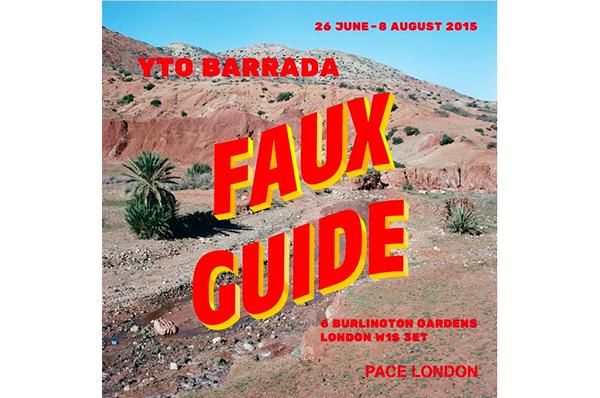Pace London presents Faux Guide, an exhibition of new work by Yto Barrada. Faux Guide extends the exploration of palaeontology, museology and natural history in Morocco that Barrada launched in her Abraaj Group Art Prize show during Art Dubai and coincides with Salon Marocain, a solo exhibition of her work at the Serralves Museum of Contemporary Art, Porto, on view through 20 September.
In conjunction with the exhibition, Mack Books will publish A Guide to Fossils for Forgers and Foreigners, a catalogue of Barrada’s new work and a patchwork of texts written and selected by the artist, which consider patrimony and shifting definitions of authenticity, with her trademark humor, subtlety and wit. The arid region between the Atlas Mountains and the Sahara Desert—once the floor of an ancient ocean—has become an El Dorado for fossil discoveries and exploitation. This gold rush gave birth to a pyramid-shaped industry
of motivated professionals, from the autodidact fossil hunter parsing rocks on a mountainside; to “preparators” who use dental tools to expose the ancient specimens; to rock-shop operators, wholesalers, auction houses, decorators and paleontologists.
Barrada’s new film Faux départ (False Start) is a trancelike journey across this landscape: a film essay which includes the most creative preparators, who fabricate fake fossils, and meditations on geological time and the story of the planet.
Faux Guide is partly Barrada’s personal museum, with the artist as faux guide, like the casbah hustler bringing tourists into a city of his own invention.
The act of collecting—by the scientist and ethnographer; the artist; the museum curator; the amateur collector; to the child collecting rocks that look like camels—is both a preoccupation of the exhibit and it’s mode of presentation. Barrada’s new body of work also appropriates aspects of museum practice— including the readymade and the vitrine—as part of its conceptual strategy.
Underscoring the role of geology, the exhibition design adopts the structure of a geological time scale, demarcated by coloured bands of Berber carpets that correspond to painted sections of the wall. The show includes photographs of dinosaur footprints and children’s toys from the 1930s, real and fake fossils, a mold of the hand of a fossil preparatory, a model of a complete dinosaur and pedagogical paintings.
Notions of the imprint stretch across Faux Guide, evinced in the relationship between the fossil as a physical imprint and its production of paleontological, geological and historical knowledge. A series of cast assemblages in plaster extrapolate the notion of the imprint to aesthetic terrain, suggesting the affinity between the use of cast sculptures and models of nature used by artists, scientists, and museums. More quotidian objects—photographs, educational aids and industrial objects—are inflected with anonymous but personal histories or specific use values. These objects serve as alternatives to those that are traditionally sanctioned for ethnographic museum
collections, especially state-run ones.
Yto Barrada: Faux Guide – Pace Gallery, London – 26 June to 8 August 2015

